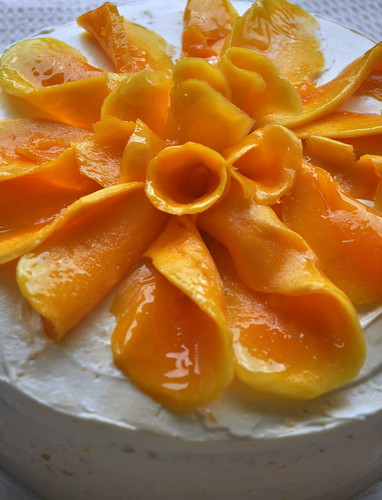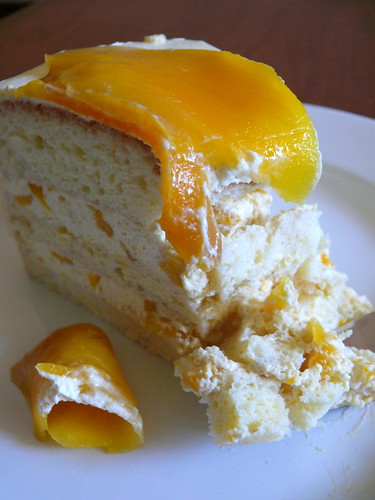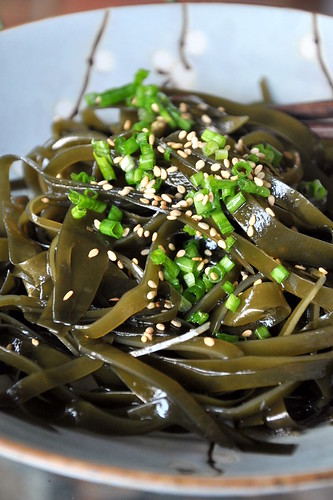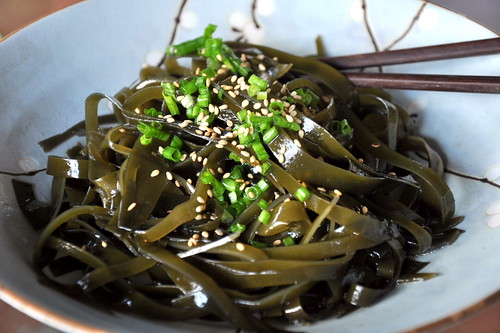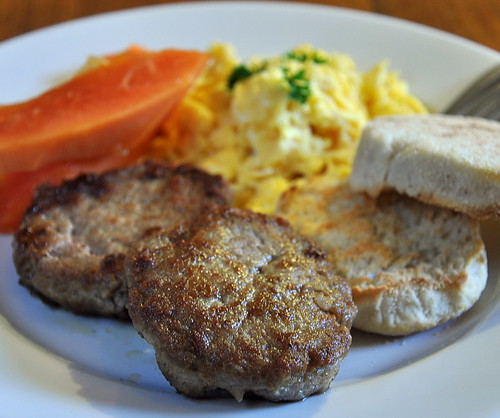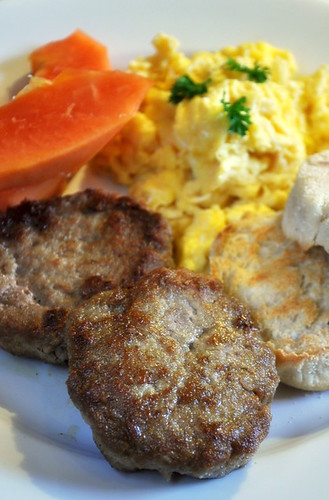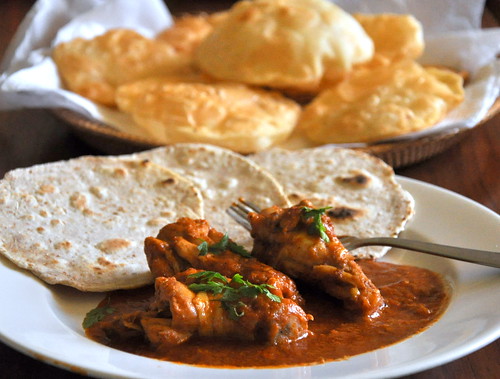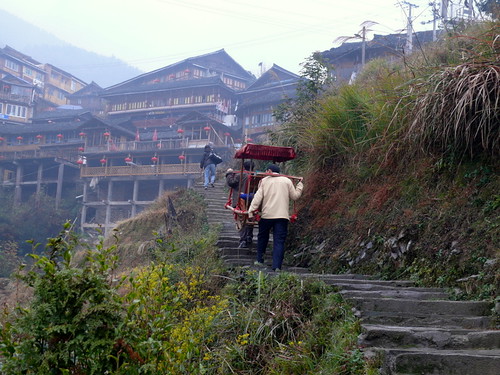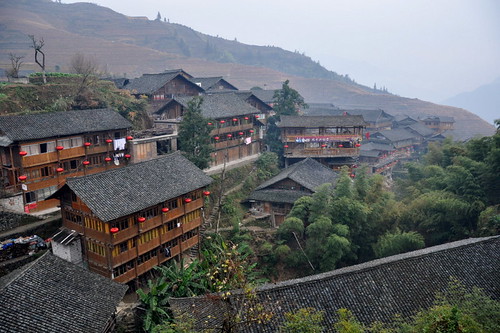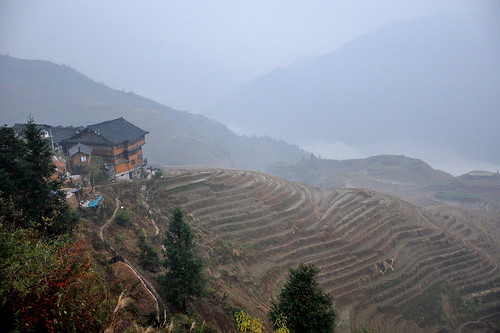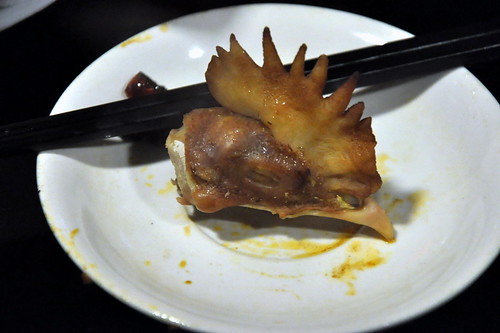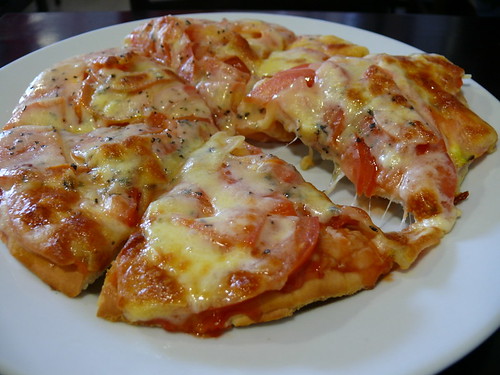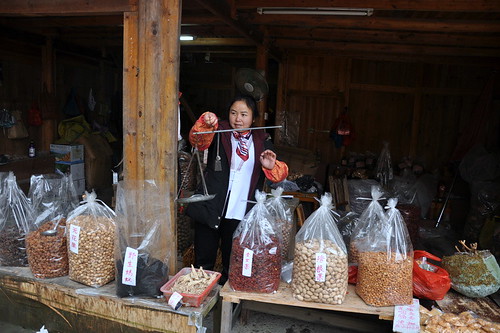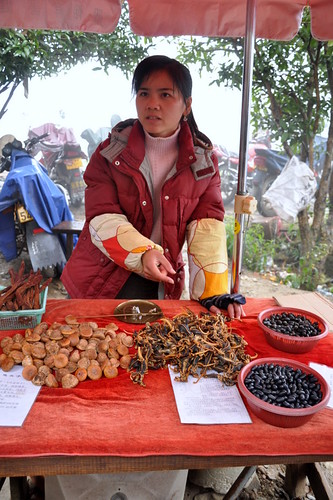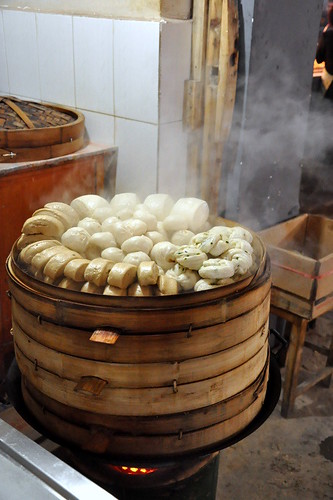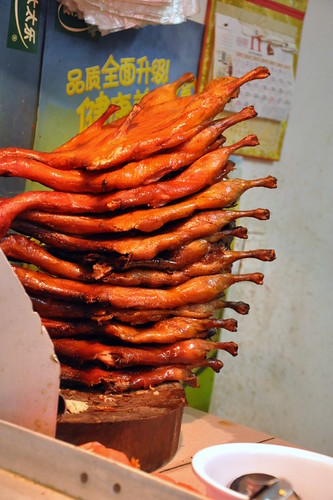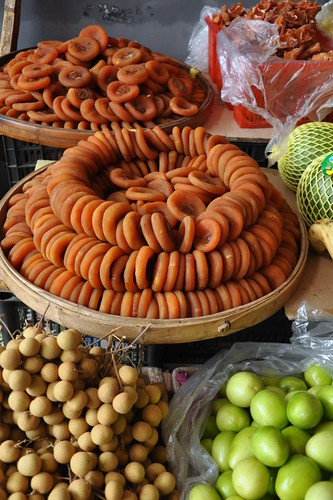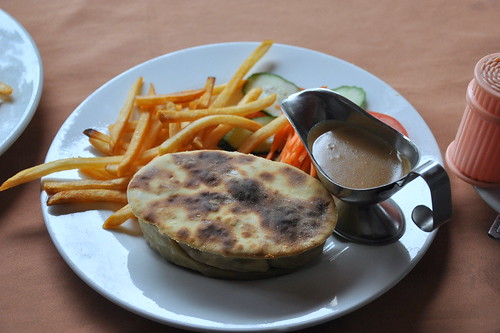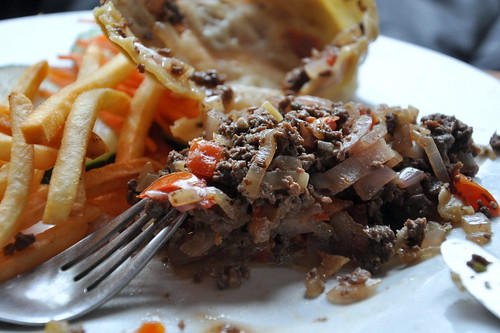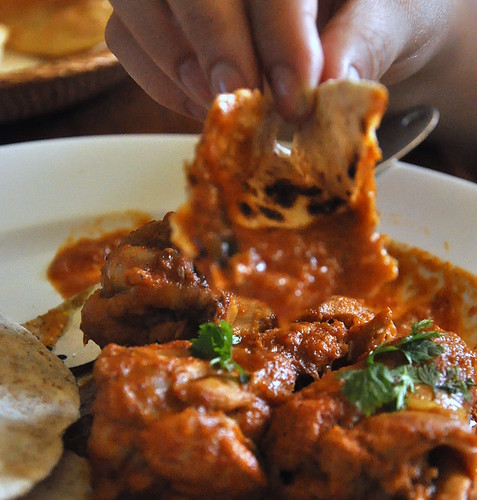
Everytime we eat Northern Indian food, butter chicken (
murkh mahani) is a must. It's like how some people order sweet and sour pork everytime they eat Chinese.
I'm not good with Indian spices and until now I can't tell between fennel and cumin, especially when they are ground. In this recipe, which is from a 2006 issue of Delicious, the garam marsala is made from scratch but that's like making my own fireworks, so I used the bottled stuff. The recipe doesn't call for plain yogurt, which is fine by me because it's an item that's hard to find here and even if I do, the remainder always goes to waste. I call this easy butter chicken because you don't need to marinade the chicken overnight. With so many spices, I don't think anyone would taste the difference if the meat is marinaded or not. Surprisingly, there's very little butter in butter chicken so it's not as sinful as it sounds. Vary the amount of cream and tomato paste to your liking; I used more tomato paste and less cream but my kids think it should be the other way around. I made slight changes to the recipe, like frying the chicken separately in a non-stick pan first.
A small dish of butter chicken in restaurants will cost about RM25/US$7, enough for one person only. The last time we ate butter chicken out, there was plenty of sauce but we had to fish for the almond-sized chicken so I prefer to cook my own butter chicken.
The best bread to eat butter chicken with is
naan but at home I prefer to make
chapatties because they are faster and easier to make.
Chapatties are nearly oil-free, full of nutty wholemeal and very easy to make. Another easy flatbread (meaning they are flat, because no leavening agent is used) is
puri but
puris need to be deep-fried which makes them tasty but greasy. When I was about 8, my dad determined that our Eurasian neighbor could help me with my English. Aunty Epps whacked my fingers with a ruler whenever I made spelling mistakes and I was terrified of her but I was in awe of her too because she was a great cook. If she was in the right mood, she'd let me stay back after lessons and watch her cook curries, stews, cakes--food my mom didn't cook. Other housewives looked like housewives but Mrs Epps was different. She was always trendily dressed and her home always tidy with music playing all the time. She always greeted her husband at the door with a kiss, which to us then was like watching a peep show. Valerie, her grown-up daughter, listened to The Beatles and wore mini skirts and danced a-go-go while Uncle Epps drove a Volkswagon. I thought they were so cool and I wanted to be like Mrs Epps. It was Aunty Epps who showed me that cooking is fun and it was her who triggered my interest in cooking.
Puris remind me of Aunty Epps, who I never met again after they moved to Perth.
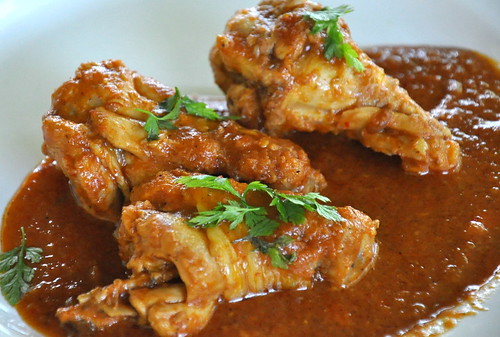 Easy Butter Chicken
Easy Butter Chicken1.5 kg chicken, jointed or deboned as preferred
1 brown onion, chopped finely
4 garlic cloves, chopped finely
2.5 cm piece of ginger, grated and 5 cm piece ginger, in thin julienne strips
1 T lemon juice
1 t chili powder
2 t paprika
40 g butter + 1 extra spoon if like
3 T tomato paste
1 T brown sugar
150 ml thickened cream
1 cup water
3 t garam marsala
3 T veg oil
1/4 cup coriander (cilantro) for garnishing
1. Put the onion, garlic, grated ginger, lemon juice, chili powder, paprika and 2 teaspoon of marsala into a food processor, adding 1 to 2 tablespoon of water to make a paste.
2. Heat 2 T oil in a large non-stick frypan and fry the chicken, in batches if necessary, until browned on all sides. Remove and set aside.
3. Add the butter + 1 T oil to a pot large enough for the ingredients. Add the spice paste and fry 5 to 10 minutes until oil starts to separate from the paste. Add the water, tomato paste, sugar and salt (you can mix all these together in a bowl first) and let sauce simmer 10 minutes.
4. Stir in the ginger strips, cream and chicken and simmer, covered, for 30 minutes or until chicken is tender.
5. Before taking the curry off the fire, add 1 t garam marsala and an extra spoon of butter if like. Top with the coriander leaves and serve with Indian bread like naan, chapati or puri.
 The Garam Marsala
The Garam Marsala1 1/2 t cumin seeds
1 1/2 fennel seeds
3/4 cardamon seeds (from inside the pods)
1/4 t kolonji/nigella seeds (which I couldn't find here)
1/4 t black peppercorns
1 small stick of cinnamon
4 cloves
1/4 t nutmeg
Heat a heavy pan and fry the spices at medium heat (except the nutmeg) for a few seconds until aromatic. Tip into a spice grinder and grind into a fine powder. Add the nutmeg. The garam marsala will keep in a glass jar in the fridge for several months.
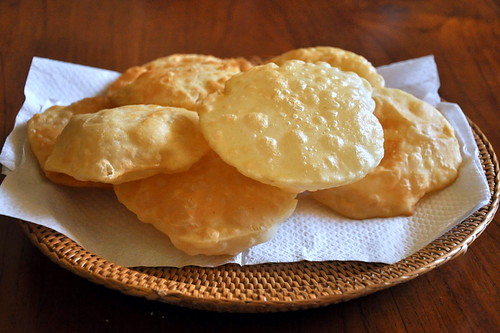 Puris
Puris300g fine wholemeal/atta flour or plain flour
1/2 t or less salt
1/2 t sugar
1/2 T butter, softened
300 ml (depending on the flour) warm water
1. Mix everything in a bowl and knead to form a firm smooth dough.
2. Divide the dough into half then each half into half and so on until you get 14 pieces of dough. Roll into balls and flatten each ball to make a small disc. Dust the work surface with flour and use a rolling pin to roll each disc into a thin 3 mm thick 6 "/15 cm circle.
3. Heat oil to deep fry (the more oil, the puffier and smoother-surfaced the puris. I didn't use enough oil) and fry each puri one by one, gently pressing it down so that it is immersed in the oil. As soon as the puri is puffed, turn over and fry for a couple of seconds and remove onto kitchen paper. Serve immediately.
Chapatties300 g fine wholemeal/atta flour
less than 1/2 t salt
1/2 T butter, softened
300 ml or more warm water
extra flour for dusting
1. Mix everything in a large bowl until the dough is soft and smooth. Cover with a damp cloth and let stand 1/2 hour or preferably overnight to give a softer bread.
2. Divide the dough into half then each half into half and so on until you get 12 -14 pieces of dough. Roll into balls and flatten each ball to make a small disc. Dust the work surface with flour and use a rolling pin to roll each disc into a thin 3 mm thick 6 "/15 cm circle.
3. Heat a frying pan or griddle (no need to grease) and cook the chapatties over medium heat, 30 seconds on each side. Keep fried chapatties covered in a tea towel until serving time. Chapatties can be frozen and reheated when needed.
